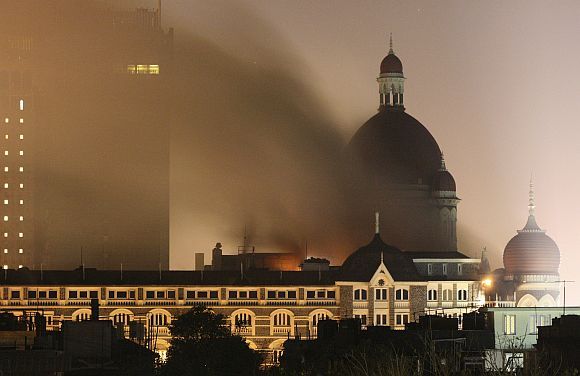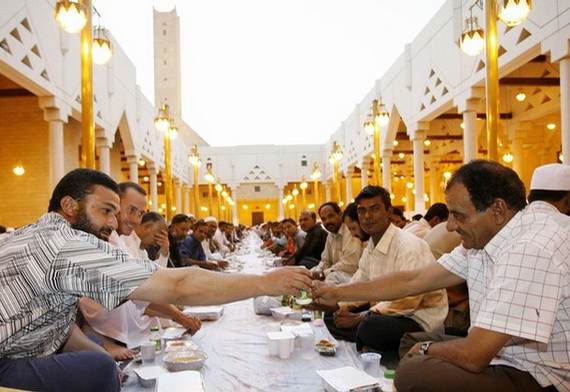Information About Islam Biography
Source:- Google.com.pkA man meditating alone in a cave near Mecca received a religious vision. This vision laid the foundations for a new religion. The year was 610 and the man's name was Muhammad.
And the belief system that arose from Muhammad's ideas became the basis of one of the world's most widely practiced religions: Islam.
Muhammad was born around 570 in the city of Mecca, located on the Arabian Peninsula. Both of his parents died before Muhammad was six and he was raised by his grandfather and uncle. His family belonged to a poor clan that was active in Mecca politics.
Following the traditions of wealthy families, he spent part of his childhood living with a Bedouin family. Bedouins led fairly isolated lives as nomadic herders in the harsh Arabian desert. Muhammad's experiences among these people most likely had a strong influence on the development of Islam.
In his twenties, Muhammad began working as a merchant and soon married his employer, a rich woman named Khadijah. Over the next 20 years he became a wealthy and respected trader, traveling throughout the Middle East. He and his wife had six children — two boys (who did not live into adulthood) and four girls. By the time he was 40, he began having religious visions that would change his life.
The prophet Mohammad's mosque in Madina
This is prophet Muhammad's mosque in Medina.
A Revelation of Faith
While meditating in a cave on Mount Hira, Muhammad had a revelation. He came to believe that he was called on by God to be a prophet and teacher of a new faith, Islam, which means literally "submission."
This new faith incorporated aspects of Judaism and Christianity. It respected the holy books of these religions and its great leaders and prophets — Abraham, Moses, Jesus, and others. Muhammad called Abraham "Khalil" ("God's friend") and identified him as Islam's ancient patriarch. Islam traces its heritage through Abraham's son Ishmael.
Muhammad believed that he himself was God's final prophet.
Central to Islamic beliefs are the Five Pillars of Faith, which all followers of Islam — called Muslims — must follow::
There is only one universal God: Allah.
Followers of Islam (Muslims) are expected to pray five times each day while facing Mecca.
All Muslims are expected to pay a yearly tax that is mostly intended to help the poor and needy.
For the entire month of Ramadan, Muslims must not eat, smoke, drink, or have sexual relations from sunrise to sunset.
All able Muslims must make a pilgrimage (hajj) to Mecca at least once in their lifetimes.
The Kaaba
Mecca houses Islam's holiest site, the Kaaba, which was believed to have been built for Yahweh by Abraham and his son Ishmael.
Islam by 661 C.E.
Islam spread at almost Internet-like speed, encompassing much of the former territories of the ancient Near East, North Africa, and Spain.
Muhammad's message was especially well received by the poor and slaves. But many people were opposed to his message. This opposition only seemed to make him more determined. After years of publicly promoting his ideas, he became so disliked that some began plotting his murder.
From Mecca to Medina and Back
In 622, fearing for his life, Muhammad fled to the town of Medina. This flight from Mecca to Medina became known as the Hegira, Arabic for "flight." The Muslim calendar begins on this year.
In Medina, the local people welcomed Muhammad and his followers. There, Muhammad built the first mosque, or Islamic temple, and began to work to separate Islam from Judaism and Christianity, which had originally influenced him.
Whereas his followers had originally prayed while facing toward Jerusalem, he now had them face toward Mecca. Muhammad continued to have revelations from Allah. The ideas from these revelations formed the basis of a poetic text called the Koran, which contains the fundamental ideas of Islam.
Muhammad fought a number of battles against the people of Mecca. In 629, Muhammad returned to Mecca with an army of 1500 converts to Islam and entered the city unopposed and without bloodshed. Before his death two years later, he forcefully converted most of the Arabian Peninsula to his new faith and built a small empire.
Jihad
Belief in jihad is a common thread to many Islamic sects. Although the exact meaning of the Arabic is difficult to express in English, jihad is most accurately translated as "struggle."
For most Muslims, jihad is a personal struggle against evil. The holy battles of this spiritual struggle are fought inside Muslims' minds and souls.
Sometimes, the struggle can take the form of a physical war against non-believers. Although this kind of jihad is referred to in English as a "holy war," most Muslims believe there is nothing holy about war and that wars should only be fought against oppressors and aggressors.
A minority of Muslims, however, places great importance on holy war jihads. This minority feels that Muslims must wage war against all nonbelievers. It is this conception of jihad that inspires Islamic extremist terrorism. Unfortunately, due to media coverage, this is the interpretation of jihad that most Westerners are familiar with.
It should be reiterated that mainstream Islam is peaceful and rejects the idea of unprovoked war. Although the concept of jihad is widespread, it has not been accepted by the general Islamic community as one of the Pillars of Islam.
Unfortunately, Muhammad had not designated a successor. The struggle over leadership that followed his death has divided Muslims to this day, creating a division in Islam between the Sunnis and Shiites.
Despite these problems, a vast Islamic empire was created over the next 12 centuries that would build a base of worshipers unrivaled by any other religion.
Democracy. Philosophy. Sculpture. Dramatic tragedies. The Olympic Games.
Many of the fundamental elements of Western culture first arose more than 2000 years ago in ancient Greece.
After conquering the Greeks, the ancient Romans spread Greek ideas throughout their empire, which included much of Europe.
After the fall of the Roman Empire, these ideas lost their prominence in European society during most of the Middle Ages (500-1500 C.E.). It was not until the Renaissance (1350-1500 C.E.) that the ancient Greek and Roman origins of many European institutions and practices were rediscovered.
One prominent element of Greek thought was the concept that humans are the measure of all things. The ancient Greeks wanted to know how the universe works. To probe such questions, the Greeks turned to philosophy, mathematics, and science.
All Things Human
Mask of Agamemnon
This gold burial mask is known famously as the Mask of Agamemnon, the heroic king of Mycenae in Homer's Iliad. Though mystery still surrounds the 16th century B.C.E. Minoan and Mycenaean cultures, archaeologists have found fascinating artifacts, including frescoes, palaces, tombs, and other burial masks.
The glorification of the human form and of human accomplishment defined ancient Greek art, philosophy, literature, and religion. Even their gods were created in the image of humans. The Greek gods had human emotions, looked like humans, and behaved more like people than infallible gods.
The Greeks' emphasis on the individual is one major cornerstone of Western Civilization. Indeed, the spirit of individualism as defined by the Greeks is still alive and well in modern American culture and society.
The Greeks were the first in the West to experiment with the concept of democratic government. Many successful modern democratic governments in the world today are heirs to the Greek model. It must be pointed out that though the Greeks developed the notion of "government by the people," most people were still excluded from the political process.
The First Greeks
Two major groups of people, the Minoans and the Mycenaeans, were the first to populate the Greek peninsula. Not much is known about either of these groups because they did not leave an abundance of written or physical evidence to provide clues about their civilization. However, it is known that by 1650 B.C.E., the Minoans occupied the island of Crete that is south of the Greek mainland. The Minoans were named for the legendary ruler of Crete, King Minos. Historians believe that the Minoans were seafaring traders who developed a rich, diverse culture.
The Mycenaeans came from a group of people who migrated from India through the Middle East and into Greece around the year 2000 B.C.E. These Indo-Europeans mixed with the native population of Greece to become the Mycenaeans. Over time, both the Minoans and Mycenaeans expanded and conquered territory until the two civilizations ran into one another.
Historians suspect that in the ensuing conflict the Mycenaeans wiped out the Minoans, whose civilization and culture disappeared somewhat mysteriously. By 1200 B.C.E., the Mycenaeans were in turn wiped out by another group known as the Dorians. This ushered in a Dark Age that lasted from 1150 to 800 B.C.E. During this time, economic activity ground to a halt, and literacy disappeared. Not much is known about this period in Greek history.
But a highly developed civilization resurfaced. From politics and philosophy to art, medicine, and science, the ancient Greeks generated thoughts that shaped the record of humankind for the next 2,500 years.
Information About Islam Islam Facts For Kids Pictures About Religion Wikipedia And History And Beliefs Worksheet On Women Today And Information Images Wallpapers

Information About Islam Islam Facts For Kids Pictures About Religion Wikipedia And History And Beliefs Worksheet On Women Today And Information Images Wallpapers

Information About Islam Islam Facts For Kids Pictures About Religion Wikipedia And History And Beliefs Worksheet On Women Today And Information Images Wallpapers

Information About Islam Islam Facts For Kids Pictures About Religion Wikipedia And History And Beliefs Worksheet On Women Today And Information Images Wallpapers

Information About Islam Islam Facts For Kids Pictures About Religion Wikipedia And History And Beliefs Worksheet On Women Today And Information Images Wallpapers

Information About Islam Islam Facts For Kids Pictures About Religion Wikipedia And History And Beliefs Worksheet On Women Today And Information Images Wallpapers

Information About Islam Islam Facts For Kids Pictures About Religion Wikipedia And History And Beliefs Worksheet On Women Today And Information Images Wallpapers

Information About Islam Islam Facts For Kids Pictures About Religion Wikipedia And History And Beliefs Worksheet On Women Today And Information Images Wallpapers

Information About Islam Islam Facts For Kids Pictures About Religion Wikipedia And History And Beliefs Worksheet On Women Today And Information Images Wallpapers

Information About Islam Islam Facts For Kids Pictures About Religion Wikipedia And History And Beliefs Worksheet On Women Today And Information Images Wallpapers

Information About Islam Islam Facts For Kids Pictures About Religion Wikipedia And History And Beliefs Worksheet On Women Today And Information Images Wallpapers
Information About Islam Islam Facts For Kids Pictures About Religion Wikipedia And History And Beliefs Worksheet On Women Today And Information Images Wallpapers

Information About Islam Islam Facts For Kids Pictures About Religion Wikipedia And History And Beliefs Worksheet On Women Today And Information Images Wallpapers

Information About Islam Islam Facts For Kids Pictures About Religion Wikipedia And History And Beliefs Worksheet On Women Today And Information Images Wallpapers

Information About Islam Islam Facts For Kids Pictures About Religion Wikipedia And History And Beliefs Worksheet On Women Today And Information Images Wallpapers

Information About Islam Islam Facts For Kids Pictures About Religion Wikipedia And History And Beliefs Worksheet On Women Today And Information Images Wallpapers

No comments:
Post a Comment